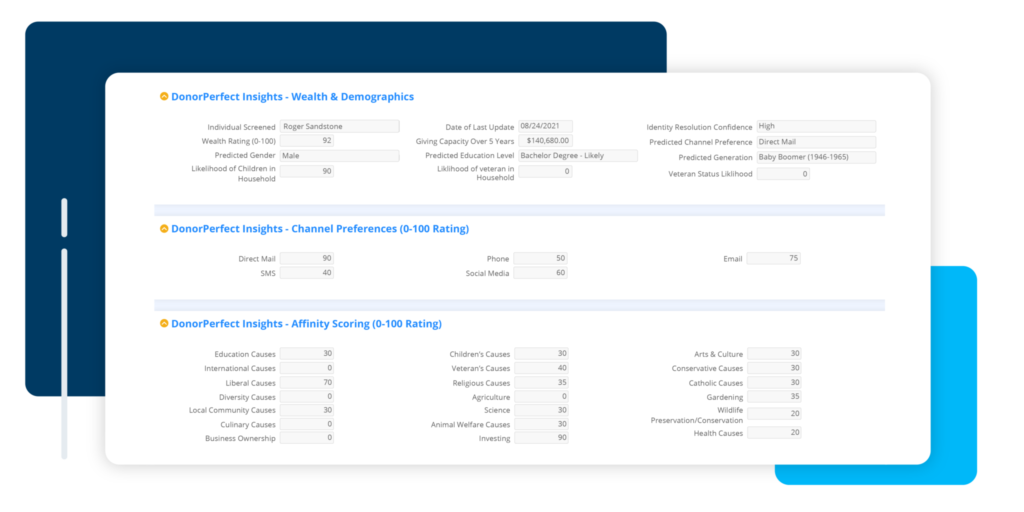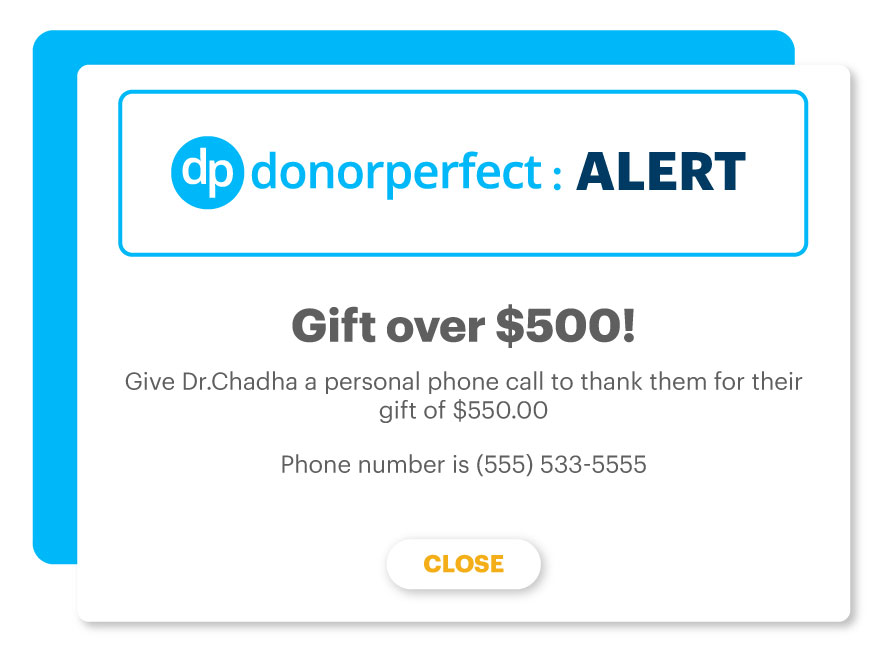Nonprofit Technology & Fundraising Blog
Subscribe to our mailing list

December 20, 2022 | Donor Acquisition, Major Donors
Finding high-net-worth donors who share your vision is the key to achieving your nonprofit’s greatest goals, especially as wealthy constituents are rushing to make their tax-deductible gifts at year-end.
Of course, generating more funds for your mission sounds great, but who exactly are these donors and how can your organization justify spending time on a major gift program? Let’s address these burning questions first.
It’s up to your organization to decide what qualifies as a major gift and who qualifies as a major donor. Nonprofit executives and development directors should specifically define these terms. Clear parameters empower your staff to measure the success of its major donor acquisition and retention strategies.
Your parameters depend on the size of your organization, the nature of your mission, the demographics of your donor population, and the variation in your funding sources. For example, you might decide that donations exceeding $10,000 are considered major gifts, and a donor giving at least 1-2 major gifts a year is considered a major donor.
In a recent study of hundreds of millions of donations, we found:
These odds are likely to impress nonprofit executives, but development directors and nonprofit communications specialists want to know how to find major donors that already exist in their database and how to acquire ones. Time to get into the nitty-gritty.
The first step is to pinpoint the people who have maximum philanthropic power. Your fundraising CRM serves as your main resource – it already has a wealth of information about your supporters’ giving history, interests, and engagement with your organization. Suggest a meeting with your nonprofit staff to map out your major giving parameters and determine which reports you’ll use to track giving history.
When it comes to acquiring new major donors, prospect research tools are revolutionary in helping fundraisers determine major giving potential.

DonorPerfect clients: You can easily screen your database for this information with integrated prospect research tools like DonorSearch and DonorPerfect Insights. Ready to learn more?
Download your DonorPerfect Insights Beginner’s Guide >>
More than anyone, major donors want to know what their money is accomplishing. They may even want to help guide how it’s spent. When you solicit a prospective supporter with a high net worth, be prepared with data, testimonials, knowledge of what motivates the donor as an individual, and a plan of how their major gift will be put to use.
During solicitation meetings, communicate:
Be transparent about the path from contribution to impact:
It’s crucial to keep your Executive Director, Director of Development, and nonprofit board in the know about your major gift processing and workflow. They should be alerted as soon as a major gift has been made to personally thank the donor in a timely manner.
Automation is a fundraiser’s ideal assistant. Tools like DonorPerfect’s SmartActions automatically prompt you to engage high-impact donors when they make a gift. You can set them up to send pop-up alerts, send internal emails, and enter data into your system.

DonorPerfect clients: You can also schedule calendar reminders right from a donor’s contact record. Set reminders for appointments, emails, phone calls, etc. and they’ll automatically connect to your Google, Yahoo, Outlook, and Apple calendars.
Don’t have DonorPerfect? Click here to request a demo of these features.
The top-rated fundraising CRMs typically allow nonprofit employees to store letter templates for specific stewardship occasions, like thanking a first-time major donor vs. returning, and to personalize each letter with data fields from the recipient’s donor record. Name, address, and donation information will auto-populate so you can acknowledge all of your donations, personally, with the click of a button. For direct mail appeals, you should also be able to personalize your envelopes and labels en masse.
Related resource: How to Prepare Your Database for Year-End Fundraising >>
Your fundraising CRM can help you track the staff member who solicited each major donor, the target solicitation amount, the ask amount, the amount received, and the number of touchpoints with that donor. By customizing the reports you pull, you can see which types of engagements are worth an investment of time or money.
Suggest a meeting with your staff to determine the metrics that are most important and the data you will need to grow your program. Fortunately, it only takes one staff member to build these custom reports. Having this information available at a glance keeps everyone on your staff aware of the status of your organization’s relationships with wealthy constituents at any given time.
Reports might include:
DonorPerfect clients: The Scheduled Reports feature allows you to pull data at your preferred frequency, and automatically email reports to stakeholders on a recurring basis. You can choose both the send frequency and the recipients!
Don’t have DonorPerfect? Click here to request a demo of these features.
Major donors find great satisfaction and pride in funding growth and expansion. They build wings in museums, sponsor new research at hospitals, and provide large amounts of financial support for special projects. Your year-end fundraising push is the perfect time to ask them to consider including your mission in their planned giving efforts and let them know what you hope to accomplish within the next year.
Need help strategizing how you will reach wealthy donors with appeals and retain them with engagement? Our free resource, the DonorPerfect Insights Beginners Guide, walks you through our integrated wealth research tool, DonorPerfect insights, and provides you with a printable worksheet to align your fundraising team around your growth goals.
Follow us on social!